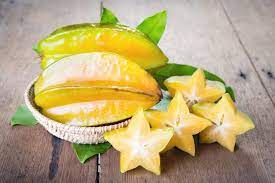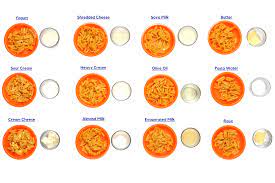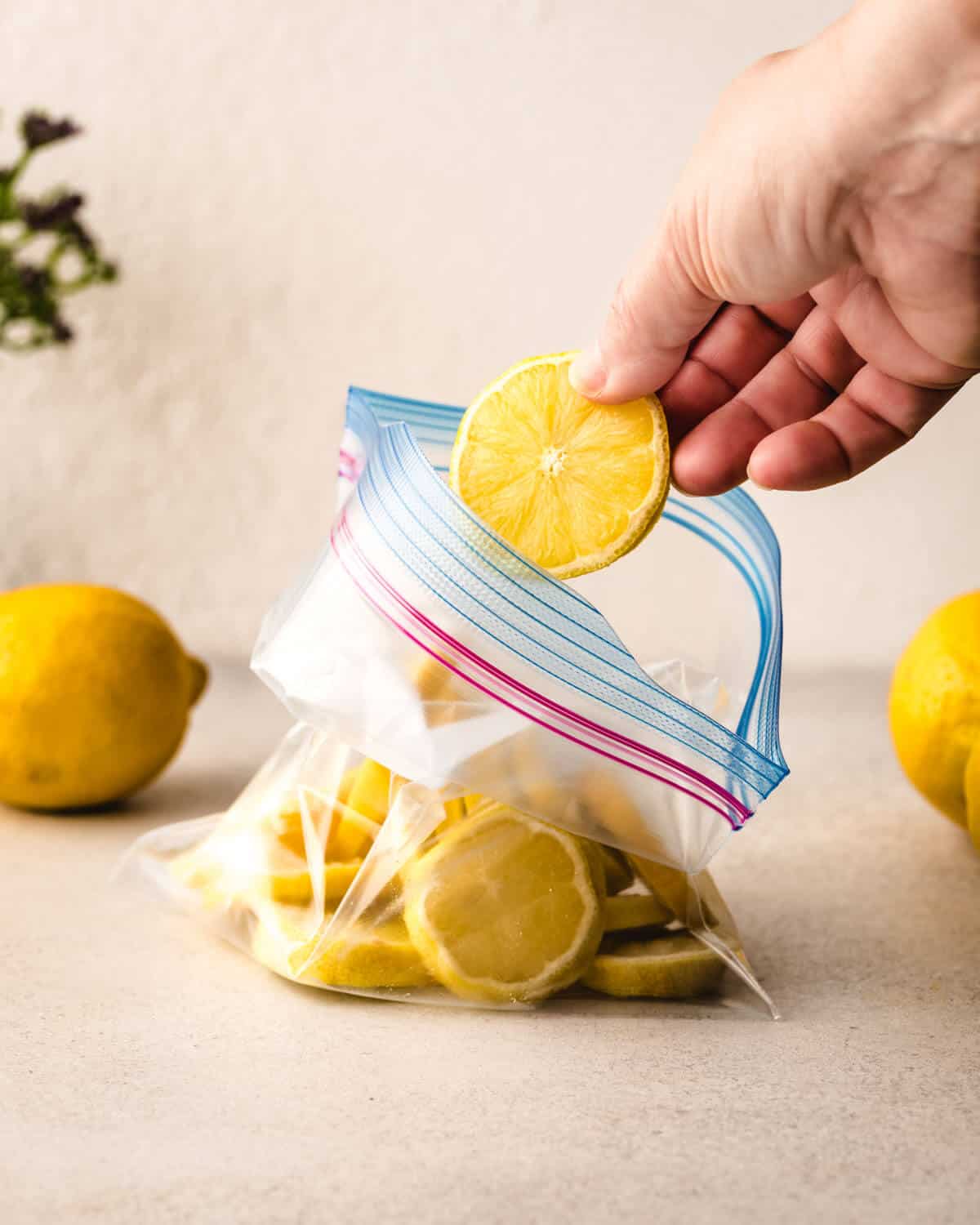What Exactly is Lemon Zest and How Can You Use It to Add a Burst of Flavor to Your Dishes?
When life gives you lemons, don’t just use the juice – utilize the magical power of lemon zest! Lemon zest is the vibrant, flavorful outer layer of the lemon peel that adds a burst of citrus goodness to any dish or drink. But did you know that there is so much more to lemon zest than meets the eye?
Why is lemon zest so special?
Lemon zest is a powerhouse of flavor that can elevate any recipe to new heights. Packed with essential oils, it contains the concentrated essence of the lemon, delivering a tangy and aromatic punch. Just a sprinkle of lemon zest can brighten up a dish by adding freshness and a slight bitterness that balances flavors perfectly. Whether you’re baking a cake, making a salad dressing, or mixing a cocktail, lemon zest is a secret ingredient that can take your culinary creations from ordinary to extraordinary.
How to zest a lemon like a pro?
Getting the perfect lemon zest requires a little skill, but fear not – it’s easier than you think! Start by washing the lemon under cold water to remove any dirt or wax. Then, using a zester or a fine grater, carefully scrape off the thin, yellow outer layer of the peel. Be sure to zest only the outer layer, avoiding the bitter white pith underneath. The result should be delicate, fragrant strands of zest that are ready to be used in your favorite recipes.
Ways to use lemon zest in your kitchen
The possibilities are endless when it comes to incorporating lemon zest into your culinary creations. Use it to brighten up pasta dishes, risottos, or creamy sauces. Add a sprinkle of lemon zest to your cakes, cookies, or muffins for a citrusy twist. Try mixing it into vinaigrettes or marinades to enhance your salads or grilled meats. And for a refreshing summer drink, infuse your lemonade or cocktails with a touch of lemon zest for an instant burst of flavor.
Now that you know the secrets of lemon zest, it’s time to let its magic shine in your kitchen. Experiment and have fun with this versatile ingredient, and discover the countless ways it can transform your dishes. So go ahead, zest away, and let the tantalizing aroma and tangy taste of lemon zest take center stage on your plate!
The Many Uses of Lemon Zest: An Essential Ingredient in Every Kitchen
When it comes to adding flavor and vibrancy to both sweet and savory dishes, lemon zest is an absolute game-changer. This magical ingredient is extracted from the outermost layer of the lemon peel and brings with it a burst of citrusy goodness that can elevate any recipe to new heights. Let’s explore the many uses of lemon zest and discover why it should have a permanent place in every kitchen.
Baking Delights
If you’re a fan of baking, then lemon zest is your secret weapon for achieving delicious and aromatic treats. Adding lemon zest to your cakes, cookies, and muffins not only infuses them with a refreshing flavor but also provides a tantalizing aroma that will have your family and guests begging for more.
Moreover, lemon zest works wonders in enhancing the flavor of creams, custards, and fillings. Whether you’re making a creamy lemon curd, a luscious lemon meringue pie, or a velvety lemon cheesecake, the addition of lemon zest will take these desserts to a whole new level of deliciousness.
Savory Sensations
While lemon zest is widely cherished for its role in desserts, it is also an essential ingredient in various savory dishes. The bright and tangy flavor of lemon zest can bring a refreshing twist to fish, seafood, and poultry recipes.
Sprinkling some lemon zest on grilled salmon or tossing it with shrimp scampi can add a zesty punch that balances out the richness of these dishes. Furthermore, incorporating lemon zest into marinades, dressings, and sauces can infuse them with a vibrant citrus note that complements a wide range of ingredients.
Infused Oils and Salts
Want to take your culinary creations to the next level? Consider making your own lemon-infused oils and salts using lemon zest. Simply combine lemon zest with olive oil or sea salt and let them infuse for a few days. The result? A homemade ingredient that can add a burst of lemony goodness to a variety of dishes.
Lemon-infused oils can be drizzled over salads, roasted vegetables, or grilled meats to bring a refreshing citrus kick. Similarly, lemon-infused salts can be used as a finishing touch to season a variety of dishes, from roasted potatoes to grilled chicken.
- Add lemon zest to your baking recipes
- Enhance the flavor of creams and fillings with lemon zest
- Sprinkle lemon zest on fish, seafood, and poultry dishes
- Use lemon zest in marinades, dressings, and sauces
- Create homemade lemon-infused oils and salts
As you can see, lemon zest is a versatile ingredient that can be utilized in countless ways in the kitchen. From adding a burst of citrus to your baked goods to infusing savory dishes with a tangy twist, lemon zest has become an essential element that no chef or home cook should be without. So, stock up on lemons and get ready to explore the incredible world of flavor that lemon zest can bring to your culinary creations!
The Magical Flavor Burst: How Lemon Zest Enhances Your Dishes
When it comes to adding a burst of flavor to your dishes, lemon zest is truly magical. This vibrant ingredient not only brightens up your food but also enhances the taste in ways you may not have imagined.
What is Lemon Zest?
Lemon zest is the outermost layer of the lemon peel. It is the colorful, fragrant part that contains the essential oils responsible for the lemony aroma. Zesting a lemon involves removing this outer layer with a zester or fine grater.
Tip: Make sure to only grate the bright yellow part of the lemon peel, avoiding the bitter white pith underneath.
How Does Lemon Zest Enhance Flavor?
Lemon zest brings a refreshing tang to your dishes, elevating the taste profile and making them more vibrant. The essential oils in the zest contain compounds that stimulate your taste buds and enhance your perception of flavors.
The zest adds a bright and citrusy note that complements a wide range of ingredients. Whether you’re cooking savory dishes like roasted chicken or sautéed vegetables, or making sweet treats like lemon bars or lemon meringue pie, the addition of lemon zest adds a zesty twist that takes your dishes to the next level.
Tip: Don’t limit yourself to using lemon zest only in desserts. It works wonders in savory dishes as well, balancing out rich flavors and adding freshness.
How to Use Lemon Zest
There are countless ways to incorporate lemon zest into your cooking. Here are a few ideas to get you started:
- Sprinkle it over salads: Add a pinch of lemon zest to your favorite salad for a burst of freshness.
- Add it to marinades: Mix lemon zest with herbs and spices to create a flavorful marinade for meat, fish, or vegetables.
- Stir it into sauces: Brighten up your pasta or seafood sauces by stirring in some grated lemon zest.
- Bake it in desserts: Use lemon zest in cakes, cookies, and pastries to infuse them with a delightful citrus flavor.
Remember, a little goes a long way. The strong flavor of lemon zest means that even a small amount can make a big impact on your dishes.
So, the next time you’re looking to enhance the flavors in your cooking, don’t forget to reach for a lemon and zest away. Let the magical flavor burst of lemon zest transform your dishes into culinary masterpieces.
The Science Behind the Zest: Nutritional Benefits of Lemon Peel
The zest of a lemon, which is the outer yellow surface of its peel, is not just aromatic and flavorful, but it also offers a range of nutritional benefits. Rich in vitamins, minerals, and antioxidants, lemon zest can be a valuable addition to your diet.
One of the key nutritional benefits of lemon peel is its high vitamin C content. Vitamin C is known for its immune-boosting properties and its role in collagen production, which is essential for healthy skin, wound healing, and strong connective tissues. Adding lemon zest to your dishes can provide a natural boost of this essential nutrient.
Lemon peel also contains a variety of other vitamins and minerals, including vitamin A, vitamin B6, calcium, and potassium. These nutrients play important roles in supporting overall health and wellbeing. For example, vitamin A is crucial for maintaining healthy vision and promoting proper cell growth, while calcium and potassium are essential for strong bones and a healthy heart.
In addition to vitamins and minerals, lemon peel is rich in antioxidants, such as flavonoids and polyphenols. These compounds help protect the body against oxidative stress and inflammation, which can contribute to various diseases and conditions. Consuming foods high in antioxidants, like lemon zest, may help reduce the risk of chronic diseases and support overall health.
When using lemon zest, it’s important to choose organic lemons whenever possible, as conventionally grown lemons may contain pesticide residues on their peels. You can use a fine grater or a citrus zester to remove the zest from the lemon without including the bitter white pith underneath. The zest can be added to recipes, used as a garnish, or infused into liquids for a burst of fresh lemon flavor.
So, the next time you’re in the kitchen, don’t forget about the nutritional powerhouse hiding in the zest of a lemon. Harness the science behind the zest and enjoy the many benefits it has to offer for your health and wellbeing.
From Citrus to Cocktails: Lemon Zest in Beverages
Lemon zest is not only a versatile ingredient in cooking but also a popular addition to beverages. Its bright and tangy flavor can add a refreshing twist to various drinks, from soft drinks to cocktails. Whether you’re looking to enhance the flavor of your mocktail or add a zing to your cocktail, lemon zest can be a game-changer.
A Burst of Flavor
Adding lemon zest to beverages can bring a burst of intense citrus flavor. The oils present in the zest carry the essence of lemon and infuse the drink with its vibrant taste. Just a hint of zest can elevate the overall flavor profile and make your drink more enjoyable.
Versatile and Refreshing
Lemon zest can be used in a wide range of beverages, such as lemonades, iced teas, and even coffee. Its versatile nature allows it to complement various flavors and create a refreshing and well-balanced drink. Whether you prefer something sweet, tart, or tangy, lemon zest can be a perfect addition to your favorite beverage.
Moreover, lemon zest can also act as a natural garnish, enhancing the visual appeal of your drink. The vibrant yellow color adds a touch of brightness, making your beverage visually appealing as it is delicious.
So next time you’re looking to spruce up your beverages, don’t forget to reach for some lemon zest. Its zesty flavor and versatility can turn any ordinary drink into a refreshing masterpiece.
Lemon Zest: A Natural Cleaner for Your Home
1. Freshen Up Your Kitchen
Lemon zest is excellent for removing unpleasant odors from your kitchen. Simply sprinkle some lemon zest on a cutting board, stovetop, or inside your refrigerator, and let it sit for a few minutes. The natural oils in the zest will help eliminate the unwanted smells, leaving your kitchen smelling fresh and clean.
2. Disinfect Surfaces
The antibacterial properties of lemon zest make it an excellent natural disinfectant. Mix lemon zest with warm water to create an all-purpose cleaning solution. Use this solution to wipe down countertops, bathroom fixtures, and other surfaces. Lemon zest not only kills germs but also leaves a refreshing lemon scent behind.
Additionally, lemon zest is effective in removing tough stains on various surfaces. Its acidic properties can help break down grease and grime, making it easier to clean ovens, microwaves, and other kitchen appliances.
| Benefits of Using Lemon Zest as a Natural Cleaner: |
|---|
| 1. Eco-friendly alternative to chemical cleaners. |
| 2. Natural oils in lemon zest provide cleaning power. |
| 3. Freshens up your kitchen and eliminates odors. |
| 4. Acts as an antibacterial agent. |
| 5. Removes tough stains on various surfaces. |
| 6. Leaves a refreshing lemon scent behind. |
Next time you’re cleaning your home, consider using lemon zest as a natural cleaner. Not only does it offer a fresh and clean aroma, but it’s also a safe and effective option that won’t harm your family or the environment.
Lemon Zest Recipes: Adding a Twist of Freshness to Your Meals
If you’re looking to add a burst of flavor to your dishes, look no further than lemon zest. The bright, citrusy taste of lemon zest can transform a simple meal into something extraordinary. Whether you’re cooking a savory dish or a sweet treat, lemon zest can take it to the next level.
The Basics of Lemon Zest
Lemon zest is the outermost layer of the lemon peel, which contains the essential oils responsible for its intense flavor. To zest a lemon, use a microplane or a fine grater to remove the thin, colored part of the peel, being careful not to include the bitter white pith beneath. The result is a fine, fragrant zest that can be used in a variety of recipes.
Lemon Zest Recipes
Here are a few recipes that showcase the versatility of lemon zest:
Lemon Zest Pasta:
Toss cooked pasta with olive oil, lemon zest, freshly squeezed lemon juice, grated Parmesan cheese, and a sprinkle of black pepper for a refreshing and light meal.
Lemon Zest Roasted Chicken:
Rub a whole chicken with a mixture of lemon zest, minced garlic, olive oil, salt, and pepper before roasting. The lemon zest will infuse the chicken with a bright, tangy flavor.
Lemon Zest Blueberry Muffins:
Add lemon zest to your favorite blueberry muffin recipe for a zesty twist. The lemon zest will complement the sweetness of the blueberries and add a burst of freshness to each bite.
Tip: Don’t forget to save any leftover lemon zest! It can be stored in an airtight container in the refrigerator for up to a week. You can also freeze it for longer storage.
Now that you know how to incorporate lemon zest into your meals, it’s time to get cooking. Experiment with different recipes and let the vibrant flavor of lemon zest elevate your dishes to new heights. Enjoy!
“FAQ:” What is lemon zest
How can you zest a lemon without a citrus zester or microplane grater?
You can use a vegetable peeler or a box grater to carefully remove the outer layer of the lemon peel, avoiding the bitter white part.
When a recipe calls for lemon zest, what is the difference between the lemon rind and citrus zest?
The lemon zest specifically refers to the finely grated outer part of the lemon rind, which contains the flavorful oils.
What is the recommended tool for finely grated lemon zest in recipes like lemon poppy seed muffins?
For finely grated lemon zest, it’s recommended to use a microplane grater, as it creates a delicate texture suitable for recipes like lemon poppy seed muffins.
How can you make lemon vinaigrette without a citrus zester?
If you don’t have a citrus zester, you can use a paring knife to carefully remove the lemon zest, ensuring to finely chop it for making a flavorful lemon vinaigrette.
Why is it important to avoid the white part of the lemon rind when zesting?
The white part of the lemon rind, also known as the pith, is bitter. To prevent bitterness in your dishes, it’s crucial to zest only the outer, flavorful part when using a vegetable peeler, box grater, or microplane grater.
What is the best way to zest a lemon without a microplane grater?
The best way to zest a lemon without a microplane grater is to use a cheese grater or a vegetable peeler, ensuring to rotate the lemon for even zesting.
How do you rotate the lemon while zesting with a cheese grater?
Hold the lemon in one hand and rotate it as you zest with a cheese grater to avoid uneven strips of lemon peel and get consistent zest.
Can you use a vegetable peeler to make strips of lemon peel for recipes that call for zest?
Yes, you can use a vegetable peeler to carefully create strips of lemon peel, avoiding the bitter white part, which can be a substitute for lemon zest in some recipes.
What should you avoid when zesting a lemon to get flavorful zest for cooking and baking?
To get flavorful zest for cooking and baking, it’s important to avoid the pith, the white part of the peel, as it can add bitterness to the zest.
How can you make homemade lemon pepper using fresh lemon zest?
Make homemade lemon pepper by finely grating fresh lemon zest and combining it with ground black pepper, creating a flavorful seasoning for various dishes.
What is the purpose of rotating the lemon while zesting with a microplane grater?
Rotating the lemon while zesting with a microplane grater ensures that you get an even amount of finely grated zest without missing any areas.
How can you learn how to zest an entire lemon without wasting much zest?
To learn how to zest an entire lemon without wasting much zest, practice using a microplane grater or cheese grater, rotating the lemon for efficient zesting.
Why is lemon zest considered an essential ingredient in popular recipes?
Lemon zest is considered essential in popular recipes because it adds a burst of citrus flavor without the acidity of lemon juice, enhancing the overall taste of dishes.
What is the yellow part of the peel that is used for zest in recipes that call for lemon zest?
The yellow part of the peel, known as the zest, is used in recipes that call for lemon zest, providing a concentrated citrus flavor.
Can you freeze lemon zest for future use in cooking and baking?
Yes, you can freeze lemon zest by placing finely grated zest in an airtight container, allowing you to have a convenient supply for future cooking and baking endeavors.
How can you make lemon zest using a microplane grater?
Hold the lemon with a microplane grater and zest the yellow part of the peel, rotating the lemon to ensure you get fine pieces of zest.
What is the role of lemon zest in recipes with lemon extract?
Lemon zest enhances the flavor in recipes with lemon extract by providing a burst of citrus aroma and taste, complementing the extract’s concentrated flavor.
How much zest can you typically get from a little lemon when using a vegetable peeler?
When using a vegetable peeler to cut strips of lemon peel, you can typically get about a tablespoon of zest from a little lemon.
Why does lemon juice add an acidic element to recipes, while lemon zest contributes a different dimension?
Lemon juice adds an acidic touch to recipes, while lemon zest, the yellow part of the peel, contributes a distinct citrus flavor without the acidity, creating a more complex taste.
Can you freeze citrus zest, like lime zest, for future use in making delicious lemon desserts?
Yes, you can freeze citrus zest, such as lime zest, to preserve its freshness for future use in creating delicious lemon desserts and other culinary delights.





